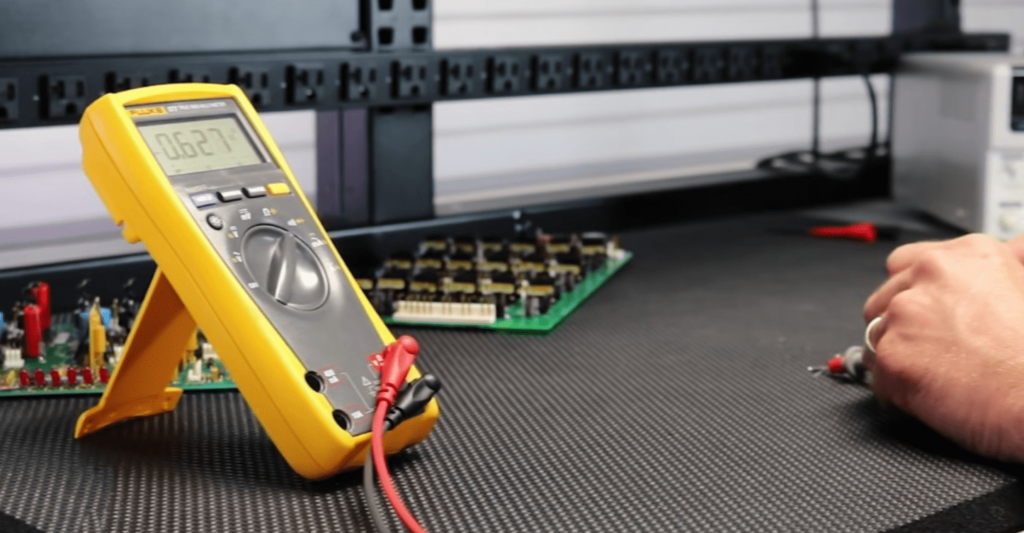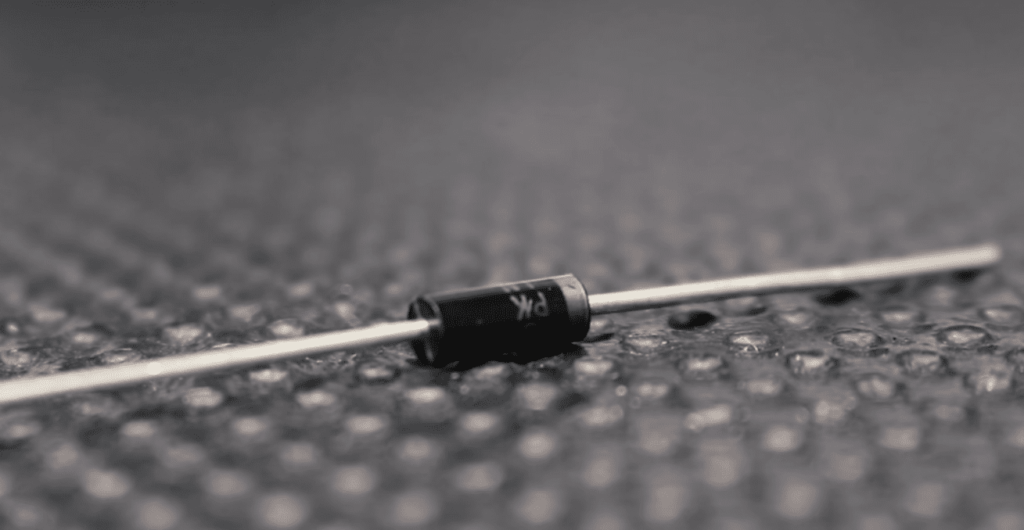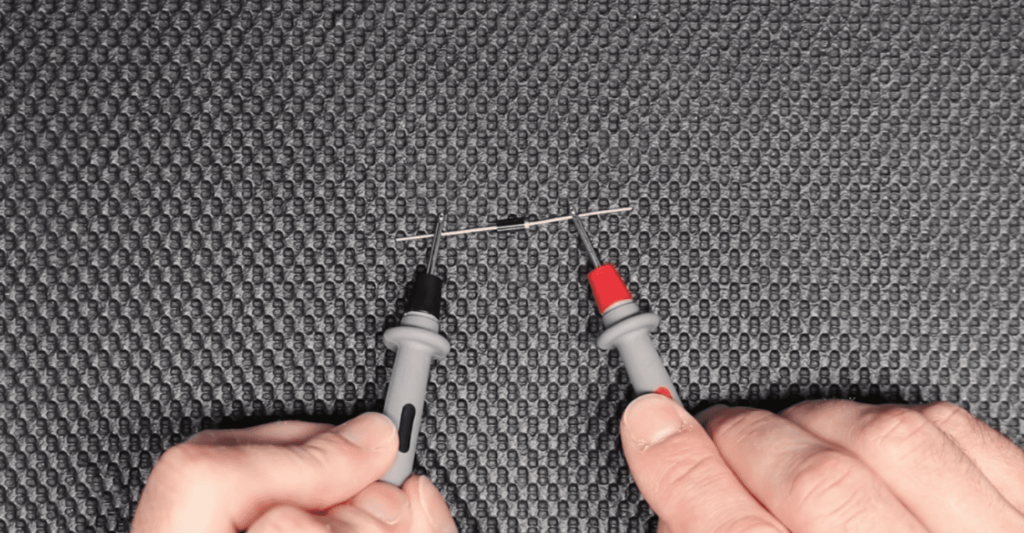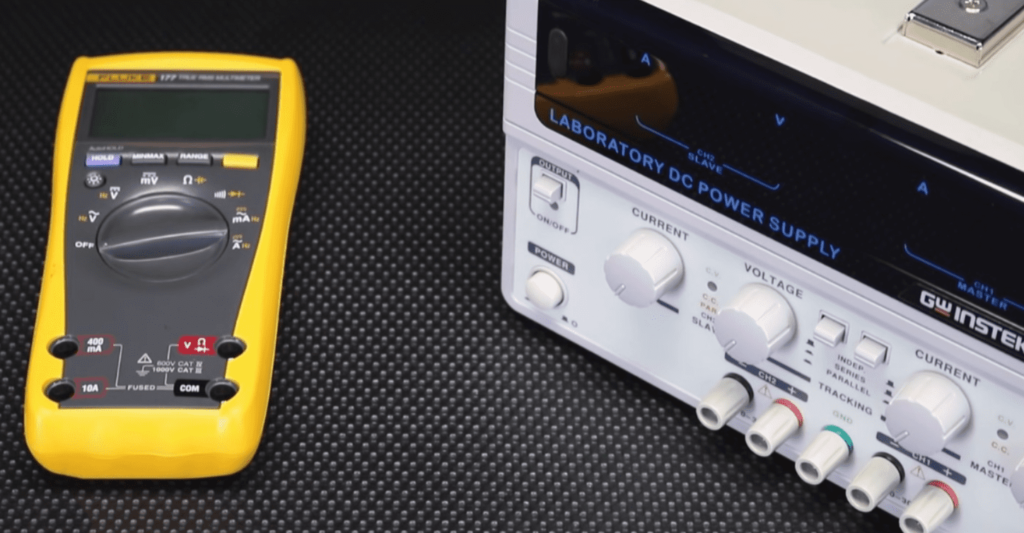A diode is a semiconductor device that only allows current to flow in one direction. Because of this, diodes are used in a variety of electronic circuits. If you have a multimeter, you can easily test a diode to see if it is functioning properly. This article will show you how to do just that.
You Need to Know This Before Testing a Diode With a Multimeter
The vast majority of modern digital multimeters have a diode test function. This function can also be used to test bipolar transistors. It is indicated by a diode symbol next to the marking of the multimeter’s mode switch.
A small note! It should be understood that when testing diodes in direct connection, the display does not show the resistance of the junction, as many people think, but its threshold voltage! This is also called the voltage drop across the p-n junction. This is the voltage above which the p-n junction opens fully and starts allowing current to flow through. To use an analogy, this is the amount of force to open the door for electrons. This voltage is between 100 and 1000 millivolts (mV). This is what the display of the device shows.

In the reverse direction, when the minus (-) lead of the tester is connected to the anode and the plus (+) lead to the cathode, the display should not show any values. This indicates that the junction is faulty and there is no current flow in the reverse direction.
Note that during the measurement you must not hold the pins of the tested element and the metal probes with both hands. This is a gross mistake. In this case we measure not only the parameters of the diode, but also the resistance of our body. This can significantly affect the result of the test.
The probes and cell leads can only be held with one hand! In this case only the measuring device and the tested element are included in the measuring circuit.
This recommendation is also valid when measuring the resistance of resistors and when checking capacitors. Do not forget this important rule!
Easy Way to Test a a Diode With a Multimeter
So, let’s check the diode in direct connection. In this case connect the plus probe (red) of the multimeter to the anode of the diode. The minus probe (black) is connected to the cathode. You can see in the picture above that the cylindrical body of the diode has a white ring on one side. This is the side with the cathode lead. This is how the cathode lead of most diodes is labeled. The threshold voltage value should appear on the display of the digital multimeter.

Now let’s check the diode in reverse. Recall that the diode does not pass current in reverse. Getting ahead of the curve, we note that a small current still flows through the p-n junction in reverse. This is the so-called reverse current. But it is so small that it is usually not considered.
Change the connection of the diode to the measuring probes of the multimeter. Connect the red probe to the cathode and the black one to the anode.

The display will show “1” in the high digit of the display. This indicates that the diode is not carrying current and its resistance is high. So, we have checked the diode and it is fully functional.
Is It Possible to Check the Diode Without Unsoldering It From the Board?
Yes, you can. But in this case it is necessary to unsolder at least one of its pins from the board. This should be done to eliminate the influence of other parts, which are connected to the tested diode.
If this is not done, then the measurement current will flow through all, including the elements connected to it. As a result of the test the reading of the multimeter will be wrong!
In some cases this rule can be neglected, for example, when it is clearly visible that there are no parts on the printed circuit board that can affect the result of the test.
The Most Common Diode Faults
A diode has two main faults. They are breakdown of the junction and breakage of the junction.
- Breakdown. When a diode breaks down, it turns into an ordinary conductor and is free to pass current in either the forward or reverse direction. In this case, as a rule, the multimeter buzzer beeps, and the display shows the resistance value of the junction. This resistance is very small and is a few ohms, or even zero.
- Breakage. When a diode is open, it does not carry any current, either in forward or backward connection. In any case the display of the device shows “1”. With this defect, the diode is an insulator. “Diagnosis” – breakage can be accidentally put and serviceable diode. It is especially easy to do this when the tester probes are worn and damaged. Make sure that the probes are in good condition, the wires of the probes are very thin and can be easily torn with frequent use.
FAQ
Is a Fluke multimeter good for testing diodes?
A Fluke multimeter is a good choice for testing diodes. It is important to select a multimeter that has the features and functions you need.
Fluke 189 vs. 289: which is better for testing diodes?
Both the Fluke 189 and 289 are good for testing diodes. However, the 289 is more accurate and has more features than the 189.
Is a budget model of multimeter good for testing diodes?
A budget model of multimeter is good for testing diodes if it has the features and functions that you need. Make sure to check the specs carefully before purchasing to ensure that the multimeter can do what you need it to do.
How can you tell if a diode is blown?
If a diode is blown, it will no longer be able to conduct current. This can be tested with a multimeter by measuring the resistance of the diode. If the resistance is infinite, then the diode is blown.
What happens when diode fails?
A failed diode can cause a circuit to malfunction. If the diode is not conducting properly, it can cause the circuit to overheat or not work at all.
When checking a diode, what is low resistance?
When checking a diode, low resistance is an indication that the diode is functioning properly. If the resistance is high, it may be an indication that the diode is damaged or not functioning properly.
What destroys a diode?
There are several things that can destroy a diode, including overheating, reverse voltage, and excessive current. Overheating can occur if the diode is used in an environment that is too hot, or if it is used for too long. Reverse voltage can occur if the diode is connected to a power source with the wrong polarity.
Can you test a diode in circuit?
Yes. You can test a diode in circuit by measuring the voltage drop across the diode with a multimeter.
How much resistance does a diode have?
A diode has very little resistance when it is turned on, and a great deal of resistance when it is turned off.
Does a diode block voltage?
A diode only allows current to flow in one direction, so it effectively blocks voltage in the reverse direction.
What is the purpose of testing a diode?
The purpose of testing a diode is to determine whether or not it is functioning properly. This can be done by measuring the voltage across the diode, as well as the current through it. If the diode is working properly, the voltage will be positive when the current is flowing through it in the forward direction, and negative when the current is flowing through it in the reverse direction.
Related Video: Testing a Diode With a Multimeter
Summing Up
Testing a diode with a multimeter is a simple and straightforward process. By following the steps outlined in this article, you can easily test the health of your diodes. Remember, always consult your multimeter’s user manual for specific instructions on how to use its features and functions.







